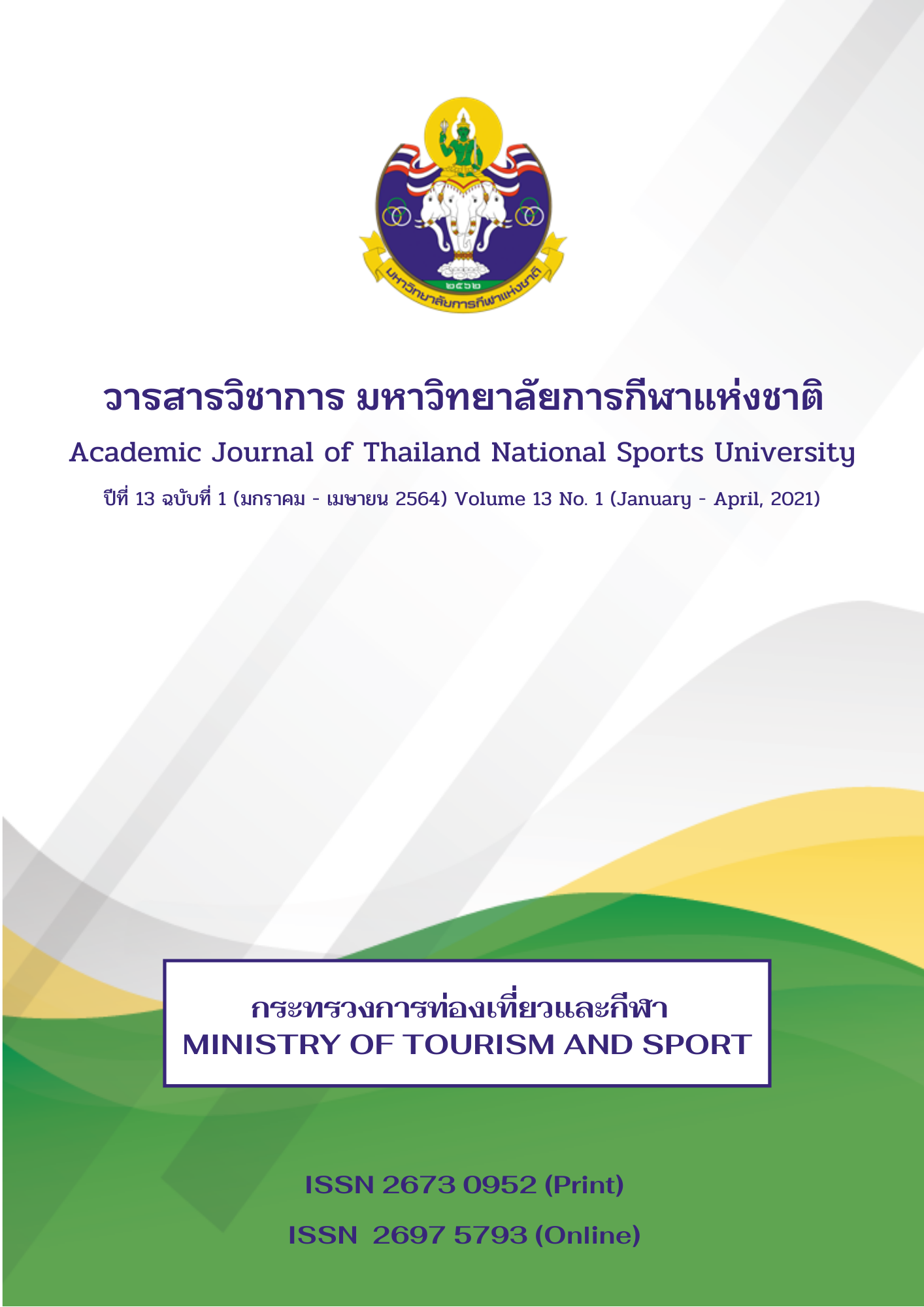DEVELOPMENT OF MUAY THAI COURSE FOR HIGH SCHOOL LEVEL BASED ON THE BASIC EDUCATION CORE CURRICULUM IN 2008
Main Article Content
Abstract
The purpose of this research was to develop Muay Thai course for high school level based on the basic education core curriculum in 2008. The research samples were 60 Mattayomsuksa 5 students of Triamudomsuksanomklao School and 60 Mattayomsuksa 5 students of Nawaminthrachinuthit Triamudomsuksanomklao School, in the second semester of academic year 2018, using purposive sampling.
The research instruments were 1) Muay Thai course for high school level based on the basic education core curriculum in 2008, 2) Health related physical fitness test and norms for Thai children of Age 7-18, 3) Achievement test for Muay Thai course for high school level, 4) Muay Thai skill test, 5) Attitude scale for Muay Thai course for high school level, 6) Desirable characteristic test for students in Muay Thai course for high school level, and 7) Students’ satisfaction questionnaire toward Muay Thai course for high school level. The data were analyzed using by frequency, percentage, mean, and standard deviation. The assumptions were tested by paired-samples t-test and one sample t-test.
The research finding was shown that the purposed Muay Thai course for high school level based on the basic education core curriculum in 2008 can be used as a guideline and prototype in teaching and learning Muay Thai in the school.
Article Details
The published article is a copyright of the Academic Journal of Thailand National Sports University. The passage appeared in each article in this academic journal is a perspective of each author which is not related to the journal. Each author is required to be responsible for all components of his/her own article. If there are any mistakes, each author must be responsible for those mistakes on his/her own.
References
Battistelli, A., F. Montani, M. Guicciardi & L. Bertinato. (2016). Regulation of exercise behaviour and motives for physical activities: The Italian validation of BREQ and MPAM-R questionnaires. Psychologie française, 61(4), 333-348.
Boonlert Utayanik. (2010). Development of health-care competence in late adolescence students (Doctoral dissertation), Kasetsart University.
Cronbach, L.J. (1951). Coefficient alpha and the internal structure of tests. Psychometrika, 16(3), 297-334.
Kirkendall, D.R., Gruber, J.J. & Johnson, R.E. (1980). Measurement and evaluation for physical educators. Dubuque, Iowa: William C Brown.
Ministry of Education. (2008). The Basic Education Core Curriculum B.E.2551. Bangkok: Agricultural Cooperative Federation of Thailand., LTD.
Myers, T.; Balmer, N.; Nevill, A. & Al-Nakeeb, Y. (2013). Techniques used by elite Thai and UK Muay Thai fighters: An analysis and simulation. Advances in Physical Education, 3(4), 175-186.
Nitinan Pugabin. (2015). The effects of training Keita Muay Thai, Muay Thai aerobics, and aerobics dance affecting the physical fitness of Mathayom Suksa 5 students (Bachelor’s thesis), Mahasarakham University.
Sangat Utranan. (1989). Fundamentals and principles of curriculum development. Bangkok: Chulalongkorn University.
Supitr Samahito et al. (2010). Test and standard of physical fitness in Thai children age between 7-18. Bangkok: Sport Science Center.
Torsak Kaewjaratwilai. (2011). Curriculum development of Thai boxing courses, lower-secondary school based on the Basic Education Core Curriculum B.E.2551 (Doctoral dissertation), Muban Chombueng Rajabhat University.
Wichai Wongyai. (1994). Curriculum development process and hands-on instructions. Bangkok: Suweeriyasan.
Winai Sirivech. (2006). Developing a STAD learning activity lesson plan, Muay Thai, physical education subject of Mathayom Suksa 3 students (Master’s thesis), Mahasarakham University.


